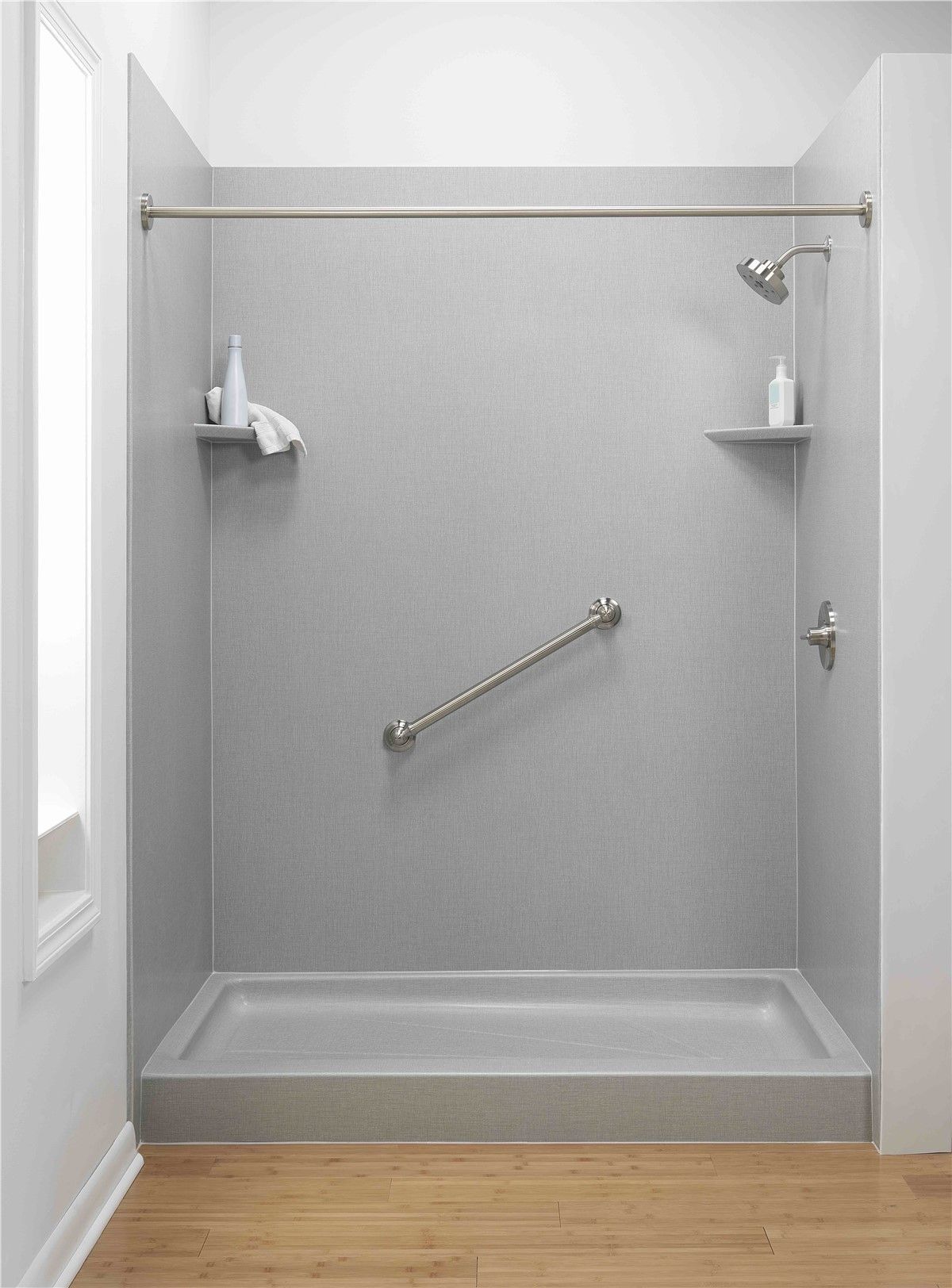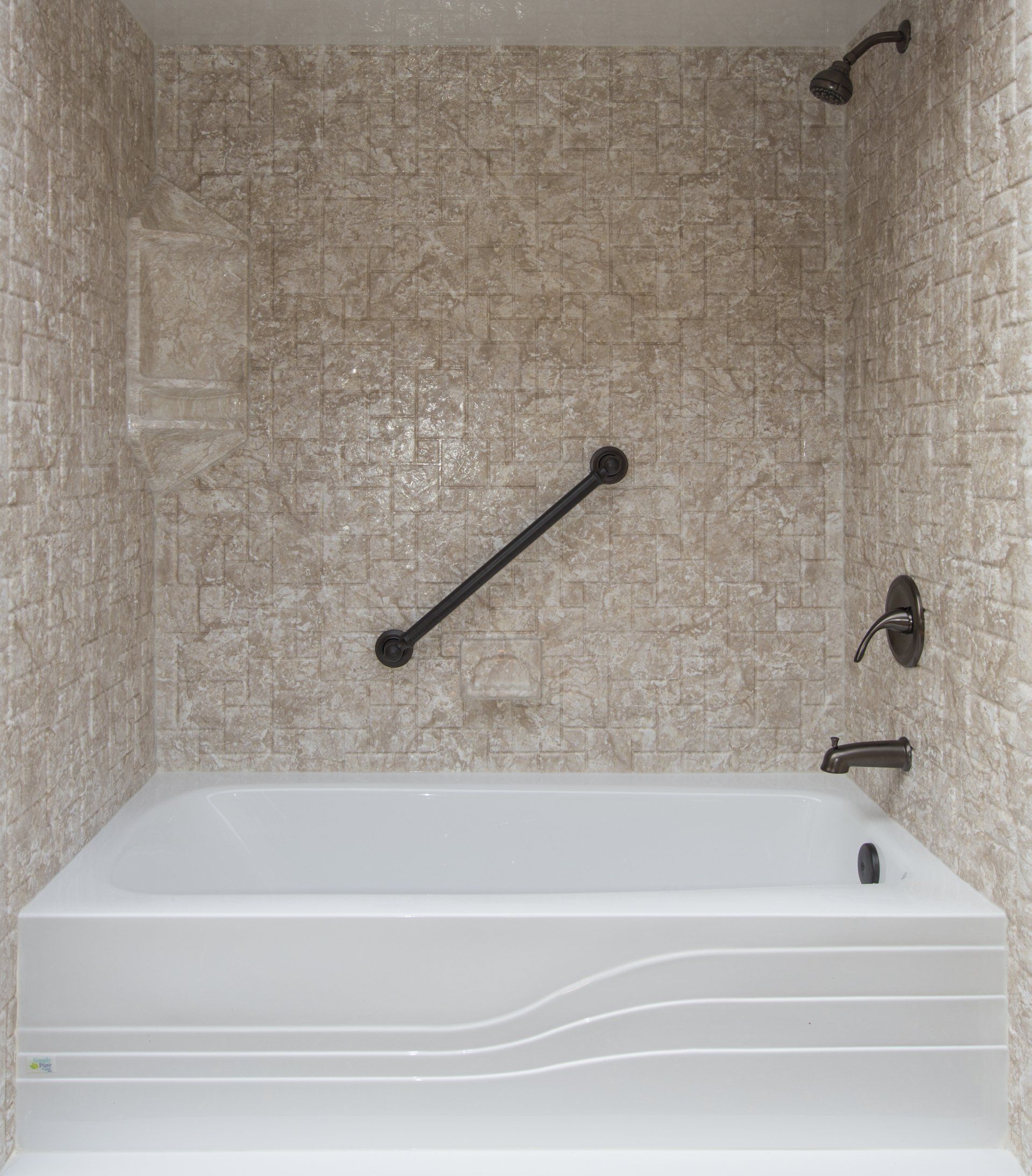Enhancing Comfort and Accessibility: The Ultimate Guide to Walk-In Shower Stalls with Seats
Introduction to Walk-In Shower Stalls with Seats
When considering a bathroom upgrade, one of the most impactful changes you can make is the installation of a walk-in shower stall with a seat. These shower stalls not only boost the aesthetic appeal of your bathroom but also enhance its functionality, especially for those with mobility challenges or anyone planning for a future where ease of access might become a priority.
Why Consider a Walk-In Shower Stall with a Seat?
Walk-in shower stalls with seats are designed with both safety and luxury in mind. These installations cater to a broad range of needs, from aging-in-place requirements to adding a touch of spa-like luxury to your daily routine. They offer the perfect blend of style and practicality, ensuring that your bathroom is not just a place for quick baths but a sanctuary for relaxation and ease.
For those concerned about bathroom safety, a walk-in shower stall with a seat reduces the risk of slips and falls by providing a stable area to sit and manage bathing activities comfortably. This feature is crucial for elderly users or those with reduced mobility, offering them independence and maintaining their dignity in personal care.
Design Considerations and Benefits
Installing a walk-in shower with a seat can transform your bathroom into a more accessible and user-friendly environment. These shower stalls come in various designs:
- Built-in Bench Seats: Typically crafted from the same material as the shower walls for a seamless look, these are permanent and sturdy.
- Floating Seats: These add a modern touch and are often constructed from luxurious materials like marble or treated wood, offering both style and functionality.
- Portable Shower Seats: For those not looking to remodel entirely, portable shower seats provide flexibility and can be moved in and out of the shower as needed.
Besides safety, walk-in showers with seats are a boon for comfort. They provide a place to relax under the soothing flow of water, making your daily shower feel more like a visit to the spa. Moreover, they can make the bathroom more versatile, serving as a useful spot for tasks like shaving legs or washing feet.
Next, we will delve deeper into the various types of seats you can incorporate into your walk-in shower, along with tips on choosing the right style and material to complement your existing bathroom decor.
Exploring Types of Seats for Walk-In Showers
When it comes to selecting the right type of seat for your walk-in shower, there are numerous options to suit different tastes, needs, and bathroom layouts. Each type of seat has its unique benefits, enhancing the practicality and style of your bathroom. Let’s explore some of the most popular choices and how they can elevate your shower experience.
1. Tiled Bench Seating:
A classic and cohesive option, tiled bench seating is built directly into the shower enclosure, usually extending from one wall. Homeowners often choose tiles that match or complement the shower walls for a unified appearance. These benches are not only durable but also easy to clean,
making them a practical choice for any bathroom.
2. Floating Bench Seating:
For a more contemporary look, consider installing a floating bench. These are typically mounted against the shower wall without visible supports, giving the illusion that they are hovering. Materials like reinforced glass, treated wood, or even a solid slab of stone can be used to create this style. Floating benches are particularly suitable for minimalist or modern bathroom designs and can make small spaces appear larger.
3. Molded Seats:
Part of some prefabricated shower kits, molded seats are integrated into the shower unit. This option is ideal for quick installations and offers a smooth, easy-to-clean surface. Molded seats are often recommended for those planning to age in place because they are sturdy and seamlessly part of the shower’s structure.
4. Portable Shower Stools:
If flexibility is a priority, portable shower stools are an excellent choice. These seats can be moved in and out of the shower as needed and are available in a variety of materials, including waterproof plastics, resins, and even luxurious teak wood. Portable stools allow you to customize the shower experience day by day and are great for households where not everyone may need or want a seat.
5. Built-in Corner Seats:
Maximize space with a corner seat, which can be built-in and tiled to match the rest of your shower. This option is perfect for smaller showers where space is at a premium. Corner seats offer a practical solution without obstructing the flow or function of the shower area.
Design Tips for Shower Seating:
- Material Choices: Consider materials that are both functional and aesthetically pleasing. Natural stone, teak wood, and composites can provide durability and resistance to moisture.
- Height and Depth: Ensure the seat height is comfortable for all potential users. Standard bench height is usually between 17 to 19 inches, but may need adjustment based on personal needs.
- Safety Features: Incorporate grab bars and non-slip surfaces around the seating area for enhanced safety, especially important for elderly users or those with limited mobility.
In the next section, we will delve into the aesthetic aspects of shower seating, including how to choose styles and materials that not only serve functional purposes but also add to the overall ambiance of your bathroom.
Aesthetic Considerations for Shower Seating
When planning the addition of a seat to your walk-in shower, it's not just about functionality—style plays a crucial role. The right choice can complement your bathroom's decor, enhance its aesthetic, and even increase your home's value. Here's how to choose styles and materials for your shower seat that align with both beauty and utility.
Harmonizing Style with Function:
1. Material Selection:
The choice of materials for your shower seat should be driven by both aesthetics and practicality. For a luxurious look, consider materials like marble, granite, or treated hardwoods like teak. These materials not only withstand the humid conditions of a shower but also add a touch of sophistication. For more budget-friendly options, tiles that match or contrast with the wall tiles can create a cohesive or striking design, respectively.
2. Color and Texture:
Choosing the right color and texture for your shower seat can significantly impact the overall feel of your bathroom. For a serene, spa-like atmosphere, opt for natural tones and textures that mimic elements found in nature, such as stone or wood. For a more modern look, sleek lines and monochromatic colors work well. Textured tiles or composites can add depth and interest to the shower seat, enhancing the sensory experience of your shower.
3. Shape and Design:
The shape of your shower seat should complement the overall design of the bathroom. Curved seats can soften the look of a shower stall with lots of straight lines and hard angles, while angular seats can reinforce a modern, minimalist aesthetic. Consider also the positioning of the seat—whether it's a focal point or more subtly integrated into the overall shower design.
Enhancing Bathroom Ambiance:
4. Integrating with Bathroom Features:
Your shower seat can be designed to harmonize with other elements in the bathroom. For instance, a seat that extends from a vanity or wraps around a corner can unify the space and make it appear larger and more open. Integrating lighting near the seating area not only serves a practical purpose but can also create ambiance, making your shower a more inviting space.
5. Customization for Personal Touch:
Customizing your shower seat allows you to tailor its function and style to meet your specific needs and tastes. For example, adding niches or shelves near the seat for toiletries can enhance convenience, while choosing a material or color that pops against the shower’s backdrop can turn the seat into a standout feature.
The design of your shower seat can transform your bathroom into a more luxurious and functional space. Next, we'll explore how to strategically place your shower seat for maximum utility and comfort, ensuring it not only serves its purpose but also enhances the usability of your shower space.
Strategic Placement of Shower Seats
Choosing the right location for your shower seat is crucial for maximizing both its functionality and aesthetic appeal. Strategic placement can enhance the usability of the space while maintaining a flow that complements the overall design of the bathroom. Here’s how to determine the best spot for your shower seat.
Optimizing Space and Function:
1. Proximity to Shower Controls:
Positioning the shower seat near the shower controls allows for easy access to water temperature and flow adjustments without having to stand up. This is particularly beneficial for those with limited mobility, ensuring that everything they need is within arm's reach.
2. Facing the Showerhead:
For an optimal experience, the seat should face towards the showerhead. This placement allows the user to enjoy the full benefit of the water stream without having to constantly adjust their position. Ensure the showerhead is adjustable or positioned in a way that it does not spray directly into the face or splash outside the stall.
3. Consider Privacy and Views:
If your bathroom layout allows, placing the shower seat opposite a frosted window or an interesting wall feature can enhance the visual experience while using the shower. This not only adds to the relaxation factor but also makes the space feel more open and less confined.
Maximizing Safety and Accessibility:
4. Accessibility:
Ensure the seat is easily accessible, with a clear path that is free of obstacles. This is especially important in smaller bathrooms where space is limited. The doorway of the shower should be wide enough to allow easy entry and exit, with the seat positioned to minimize movement within the space.
5. Integrating Safety Features:
Incorporate grab bars near the shower seat to aid in transferring to and from the seat safely. The floor around the seat should have non-slip tiles or mats to prevent accidents. These features are essential for creating a safe environment, particularly for elderly users or those with disabilities.
Enhancing the Shower Experience:
6. Space for Additional Amenities:
If space allows, consider adding extra amenities around the shower seat, such as built-in shelves or niches for toiletries. This not only makes the shower more functional but also keeps essentials at hand, reducing the need to stand up or reach out dangerously.
7. Multi-Functional Seating:
In larger showers, a longer bench can serve multiple purposes, such as accommodating more than one person or allowing space for relaxation. If you often share the bathroom during busy mornings, a larger seat can be a practical solution.
Lastly, we will provide practical tips on maintaining your shower seat to ensure it remains a safe, stylish, and integral part of your bathroom for years to come.
Maintaining Your Shower Seat for Longevity and Safety
Once your walk-in shower with a seat is installed, maintaining it properly is crucial to ensure its longevity and to keep it looking as good as new. Proper maintenance also plays a significant role in ensuring safety and hygiene. Here are essential tips for caring for your shower seat, keeping it clean, and ensuring it remains a secure part of your bathroom setup.
Routine Cleaning Tips:
1. Daily Wipe-Down:
For optimal hygiene and to prevent the buildup of soap scum and mildew, wipe down the shower seat after each use. Use a squeegee or a soft cloth to remove excess water and moisture, which can degrade materials over time.
2. Weekly Deep Cleaning:
Depending on the material of your shower seat, use appropriate cleaners that are effective yet gentle enough to not damage the surface. For tile and stone seats, use pH-neutral cleaners to avoid etching the material. For wood seats like teak, a mild soap and water solution can suffice to remove grime without stripping natural oils.
3. Avoid Harsh Chemicals:
Harsh chemicals can damage the finish of your shower seat materials. Always opt for cleaners specified for use on your particular seat's material, and avoid abrasive scrubbing tools that could scratch or gouge the surface.
Maintaining Safety Features:
4. Regular Inspection of Fixtures:
Periodically check any attached hardware, such as grab bars and mounting brackets, to ensure they are secure. Over time, these can loosen with regular use, which might compromise safety. Tightening screws and replacing worn parts can prevent accidents.
5. Anti-Slip Treatments:
For added safety, consider applying anti-slip coatings to the seat surface, especially if the seat is made of a slick material like polished stone. These treatments create a textured surface that provides extra grip, reducing the risk of slips.
6. Mold and Mildew Prevention:
Keep the shower area well-ventilated to prevent the growth of mold and mildew, which are common in damp environments. If signs of mold appear, address them immediately with mold-killing solutions and increase airflow to the area to dry it out more effectively.
Long-Term Care and Upkeep:
7. Sealant Application:
For stone and tile seats, apply a sealant at least once a year to protect the surface from water damage and staining. This helps maintain the aesthetic quality of the material and prevents water from seeping into porous areas.
8. Conditioning Wood Seats:
If your seat is made of wood, regularly apply a wood conditioner or oil specially formulated for bathroom use. This will help maintain the wood’s natural moisture, prevent cracking, and preserve the rich look of the material.
With these maintenance tips, your walk-in shower stall with a seat will continue to offer comfort, safety, and style for many years. Regular upkeep not only keeps your bathroom looking pristine but also ensures that it remains a functional and safe space for everyone in your home.
Blog






